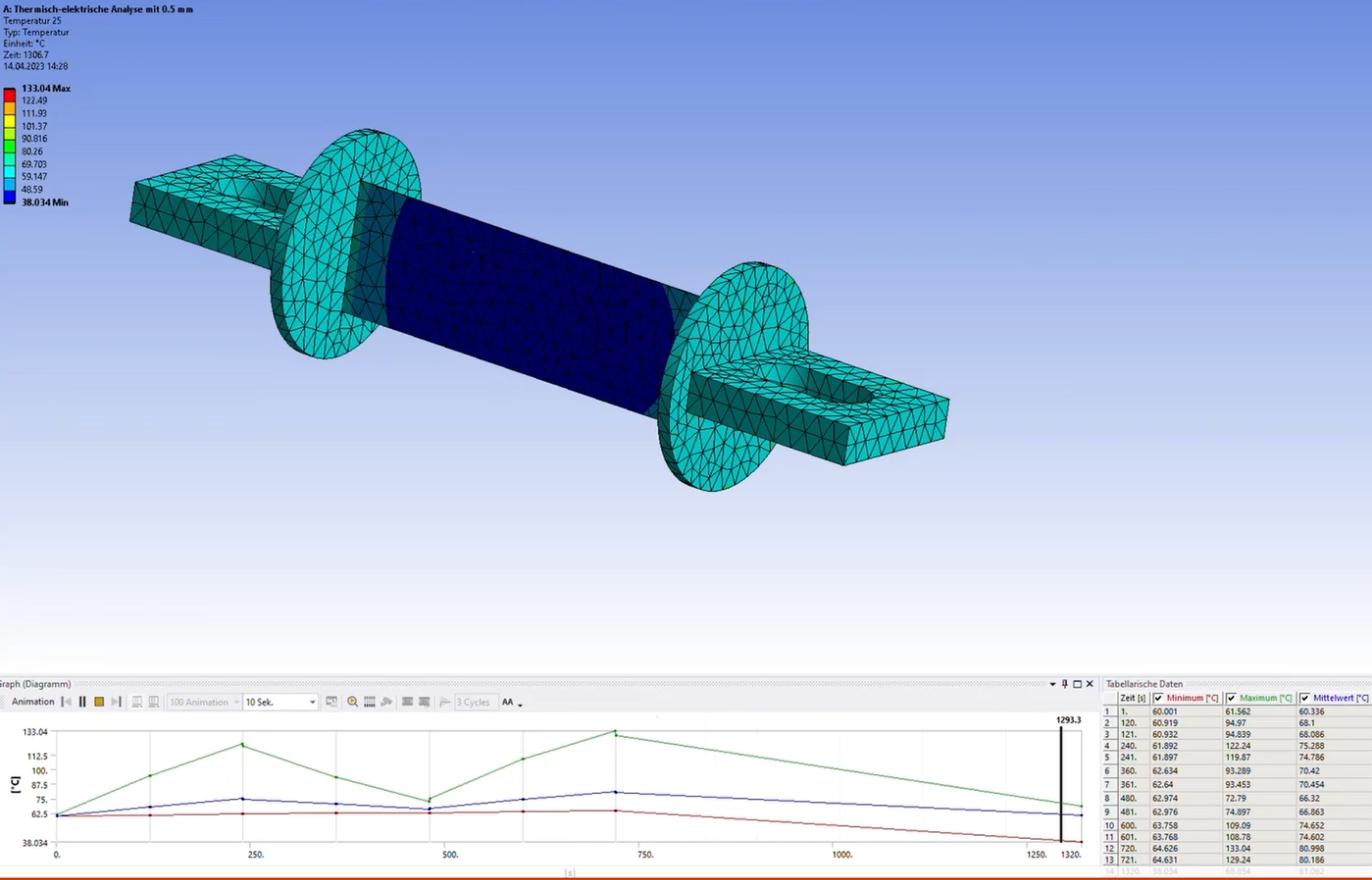-
-
April 18, 2023 at 6:28 am
Mathias Giesbrecht
SubscriberI am currently working on a transient thermoelectric simulation for a fuse in a power distribution unit. The simulation ambient temperature is set at 60 degrees Celsius, and the range boundary condition for convection is also set at 60 degrees Celsius. However, during the simulation, I have noticed that the temperature inside the fuse drops below 60 degrees Celsius, even when the current is still flowing through it.
I have attached a photo of the problematic part of the simulation for your reference, and I would appreciate any feedback or recommendations on how to solve this issue. I am open to any insights that could help me understand and address the problem, including possible improvements to my simulation setup or approaches to analyze the simulation results.
-
April 20, 2023 at 2:28 pm
dlooman
Ansys EmployeeIt could be because the elements are too large for the time step. In Section 3.4.3.2 of the APDL Thermal Analysis Guide there's an equation that says the time step cannot be greater than:
(element size)^2 / 4*diffusivity.
This is for second order elements. You could try switching to first order elements.
-
April 20, 2023 at 3:18 pm
Mathias Giesbrecht
SubscriberHey Dave,
Thanks for the help! Does the programm can not separate himself in smaller substep during the calculation?
I created a smaller version of the simulation, and now the temperature no longer drops below the ambient temperature. However, I still don't understand how the system works with different time steps. When I use more time steps, the system heats up quickly in the first 2-3 steps and then gradually becomes hotter over the next 7 steps. On the other hand, if I use only 2-3 time steps, the system heats up more slowly.The screenshot below are for the same model and all the paramter are constant.

Thanks for the help
Best
Mathias
-
-
April 20, 2023 at 4:27 pm
dlooman
Ansys EmployeeCould you email me those images at dave.looman@ansys.com ? They're hard to read in the forum. I can't explain why solving in 2 or 3 steps would slow the heating. The time integration might not be as accurate and if the loading is ramped it might be ramped over a longer time, but those two effects wouldn't make a huge difference. A factor of 2 in the heating rate at most.
-
- The topic ‘Thermoelectric Simulation of Fuse’ is closed to new replies.



-
2878
-
970
-
852
-
599
-
591

© 2025 Copyright ANSYS, Inc. All rights reserved.







